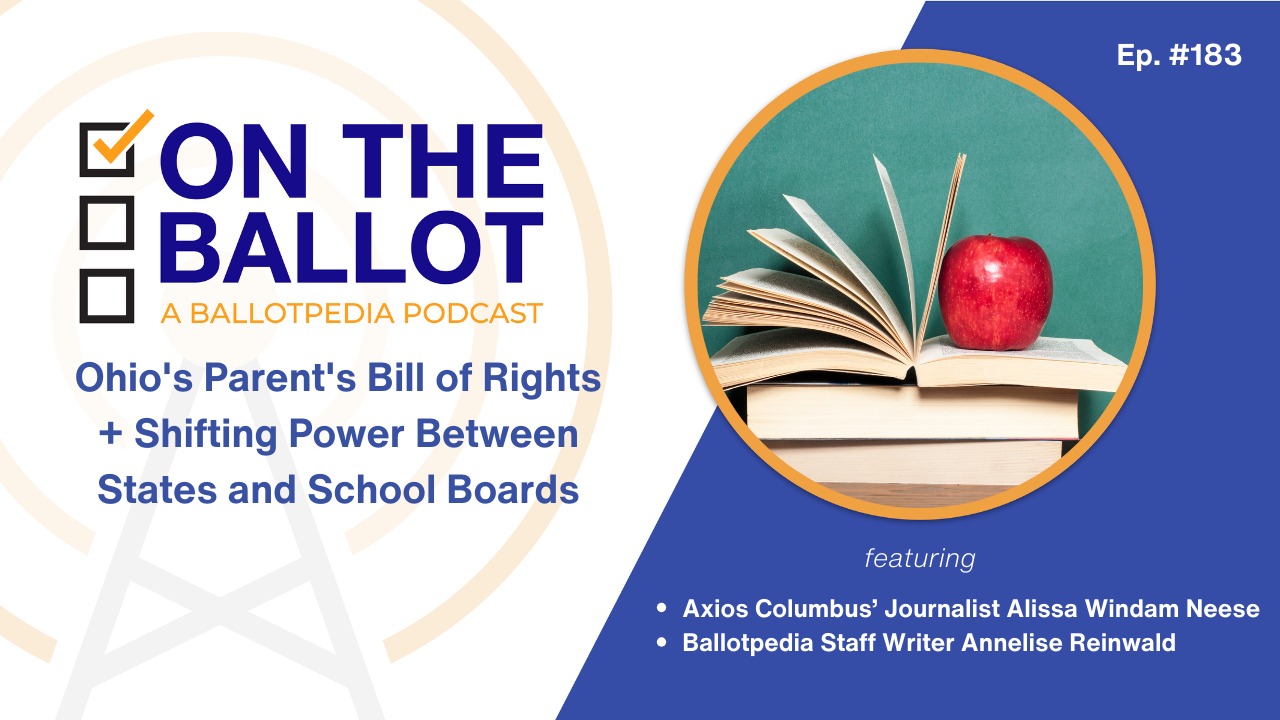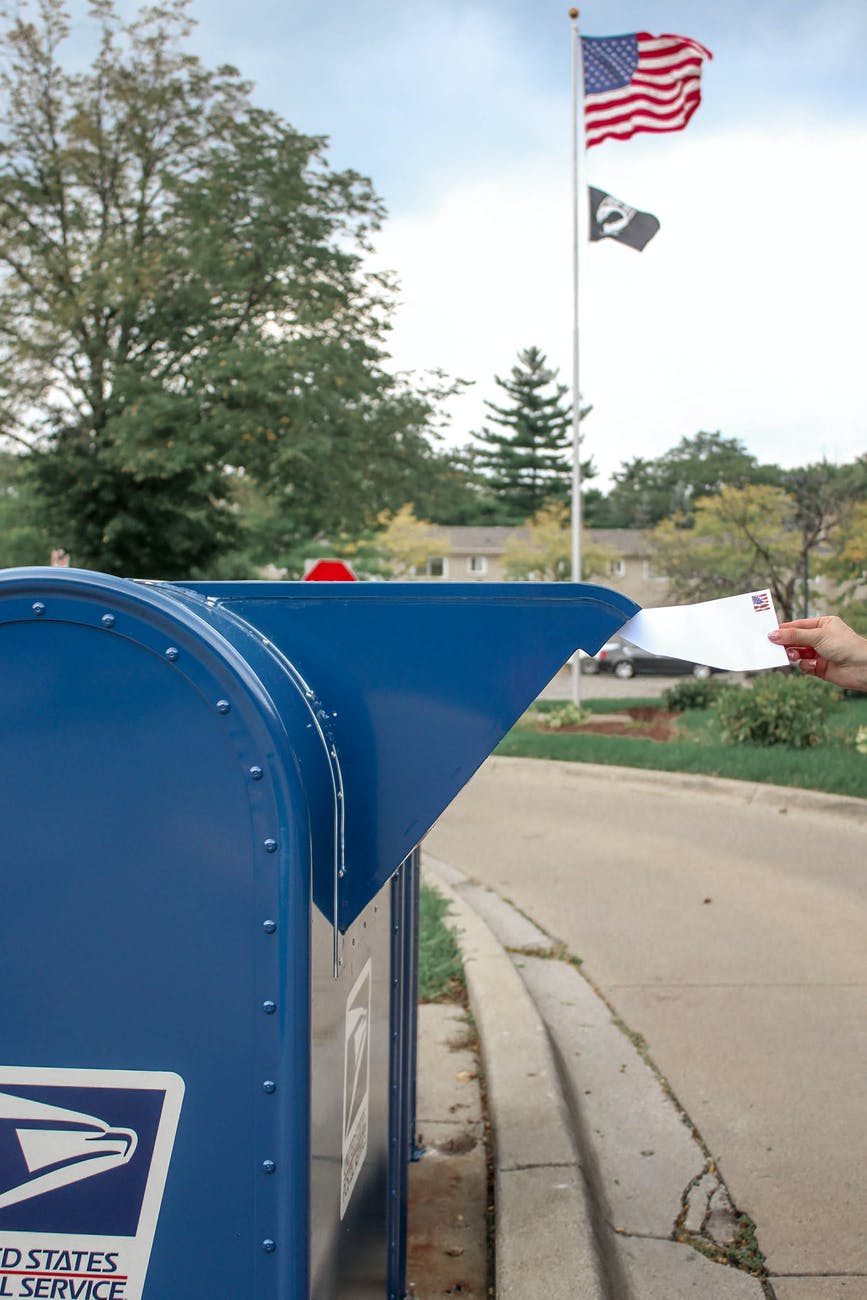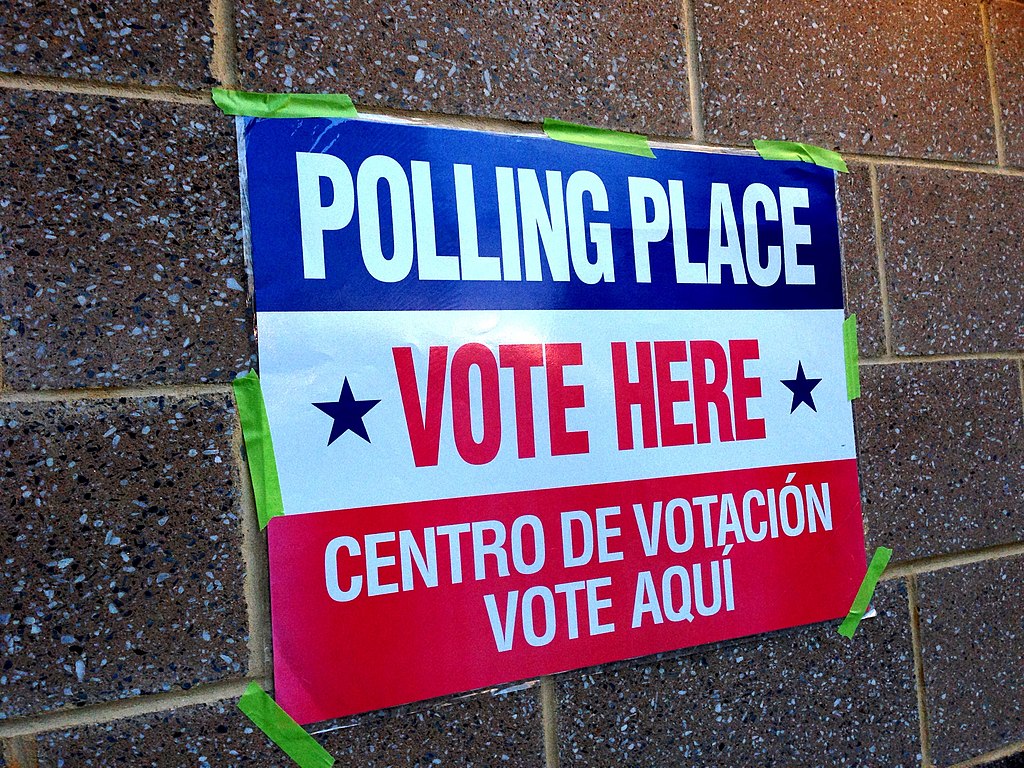Tag: ohio
-
Ohio voters to decide on Issue 2, a $2.5-billion bond measure for local infrastructure projects

Ohio voters will decide on Issue 2 on May 6, 2025. Issue 2 would authorize the state to issue up to $2.5 billion in bonds over 10 years to help local governments fund infrastructure projects. Issue 2 would authorize the issuance of up to $2.5 billion in general obligation bonds (GO bonds) over a 10-year…
-
Political speech or governmental mechanics: Ohio case asks if ballot summary reviews regulate speech or lawmaking

The U.S. Supreme Court declined on April 22, 2025, to block a district court’s ruling that found that Ohio’s fair and truthful requirement for ballot initiative petitions violates the First Amendment. This law requires the Ohio Attorney General to determine whether submitted petition summaries are fair and truthful statements of the proposed law before advancing…
-
Ohio’s Parent’s Bill of Rights + Shifting Power Between States and School Boards

On this episode (#183): Authority over public education is shifting in many parts of the country, as states revisit the role of local school boards and adopt new policies on curriculum, student rights, and parental involvement. In Ohio, a recently enacted Parents’ Bill of Rights outlines new requirements for school districts related to parental notification…
-
Ohio voters have decided on 306 state ballot measures since 1910; the 307th is scheduled for May 6, 2025

Ballotpedia completed an inventory of all Ohio ballot measures since 1910. Between 1910 and 2024, Ohioans voted on 306 ballot measures. Voters approved 169 measures (55.2%) and rejected 137 measures (44.8%). In Ohio, measures can be placed on the ballot through the state legislature as well as through citizen initiatives. Between 1910 and 2024, the…
-
Update on 2025 and 2026 ballot measure certifications: Wisconsin certifies Voter ID Amendment for April 1

The number of certified ballot measures for 2025 and 2026 is trending above the average as of Jan. 21, 2025. For 2025, six statewide ballot measures have been certified in three states—Louisiana, Ohio, and Wisconsin. Six is three measures more than the average of three for this point in an odd-numbered-year election cycle since 2010.…
-
Ohio becomes twenty-third state to adopt a Parents’ Bill of Rights

Ohio Gov. Mike DeWine (R) signed a Parents’ Bill of Rights into law on Jan. 8, encoding a parent’s right to direct the upbringing and education of their child into state law. Ohio is the 23rd state to adopt a Parents’ Bill of Rights. House Bill 8 includes the following rights for parents: The bill…
-
Update on 2025 and 2026 ballot measure certifications: Ohio certifies one for 2025, Wyoming certifies one for 2026
The number of certified ballot measures for 2025 and 2026 is trending above the average as of Jan. 7, 2025. For 2025, five statewide ballot measures have been certified in two states—Louisiana and Ohio. Five is two measures above the average (three) for this point in an odd-numbered year election cycle since 2010. For 2026,…
-
Ohio enacts education bill reducing licensing requirements, repealing education regulations

An Ohio K-12 education bill went into effect Oct. 24, reducing educator licensing requirements and repealing certain education regulations from the Ohio Revised Code. Senate Bill 168 included provisions: State Sen. Michele Reynolds (R), who sponsored the bill, said it would “eliminat[e] excess and burdensome regulations and [address] teacher shortages.” Matt Dotson, a lobbyist with…
-
72% of elections in Ohio are uncontested

Of 1,070 regular elections in Ohio—770 (72%) are uncontested. An uncontested election is one where the number of candidates on the ballot is less than or equal to the number of seats up for election. Of the 26 states where Ballotpedia is covering every election on Nov. 5, Ohio has the sixth highest rate of…
-
Six candidates running for three seats in Ohio State Supreme Court general election

Six candidates are running for three seats on the Ohio Supreme Court in the partisan general election on Nov. 5, 2024. The Ohio Capital Journal wrote that the outcome of the race will “have major impacts on a wide variety of issues that affect the lives of Ohioans,” including the state’s universal school voucher program,…

